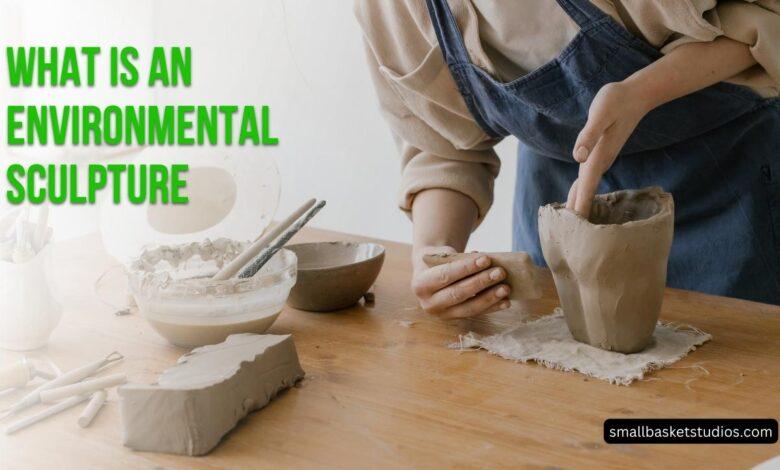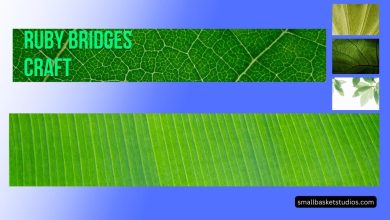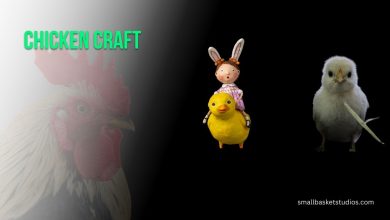What is an Environmental Sculpture?

Public spaces are being reimagined worldwide through environmental sculpture – artworks designed in union with the landscape around them. Far more than ornamental statues set atop a lawn, today’s eco-art seamlessly integrates the natural and built environments, connecting people to once degraded places in need of remediation. Continue reading to learn about the evolution, design, and transformative power of environmental sculptures promoting biodiversity and sustainability.
A History of Humanity and Ecology Entwined
Environmental art has roots reaching back to ancient civilizations. Prehistoric peoples created petroglyphs and geoglyphs using the very land itself as their canvas. Some later cultures engineered intricate gardens, water systems, and natural sites integrated with architecture. Still, the modern environmental art movement did not fully take shape until the 1960s and 70s. During this period, the historic separation of art and nature began to close through pioneering large-scale installations and restoration works.
The Needed Shift Toward Regenerative Thinking
What distinguishes today’s eco-artists is their regenerative mindset. Where humans once sought dominion over the natural world, environmental sculptors now seek symbiotic balance. Their creative process heals damaged terrains, reconnects fragmented habitats, and nudges society toward models that nurture rather than extract. People remain central to the environments they craft, with the works aimed squarely at enriching their shared public spaces.
Current Statistics on Environmental Destruction and Renewal
The works of eco-artists counter an ongoing crisis of environmental exploitation:
- Up to 1 million plant and animal species worldwide face extinction in coming decades due to human activities, per a 2019 UN report. This suggests grave harm to ecosystems underpinning human economies, livelihoods, food security, health and quality of life worldwide.
- Every year an estimated 7 million hectares of forest disappear, often with permanent impacts on biodiversity and climate stability, according to World Bank data.
- At the same time, major cities have averaged a 5% increase in public green space per decade, helping absorb emissions, reduce flood risks, and promote public health and social connection.
- In the US alone, volunteering for environmental cleanup and restoration totals some $13 billion a year, reflecting society’s deepening commitment to planetary stewardship, per a 2021 Deloitte economic report.
These statistics reveal a pivotal moment of ecological reckoning, where continued destruction must give way to healing and sustainability for environments to support thriving human societies.
Sculptural Forms that Merge Art and Nature
Contemporary environmental designers employ diverse creative mediums and sculptural forms to facilitate this transition toward balance:
Land Art
Perhaps most iconic are expansive land art installations like Robert Smithson’s 1970 Spiral Jetty, an earthwork of basalt rock and mud curling counterclockwise into Utah’s Great Salt Lake. By directly sculpting shoreline terrain, Smithson focused attention on water conditions and lake ecology while mingling natural and industrial material textures.
Restoration Architecture
Incorporating living systems into built projects, architects like Emilio Ambasz seek a structural symbiosis between the manmade and natural worlds. His 1977 Green Museum melded flora and building features so completely that neither wholly distinguished itself from the other.
Habitat Works
Many environmental artists build fully functioning habitats and animal infrastructure as their creative medium. Artist Christy Rupp’s sculptural birdhouses intermix salvaged wood, plastics and metal to manufacturers organic homes where urban nature might flourish.
Water Works
French artist Anne Marie Jugnet + Alain Clairet carved a spiraling riverbed into regional limestone as their Fluviale sculpture. The resulting water vortex returns oxygenating flow vital for reviving vegetation and microorganisms to areas starved of natural irrigation.
Kinetic Sculptures
Utilizing technology, Janet Echelman suspends volumetric net sculptures across urban airspaces. Water particles and wind currents become visible as her ethereal worlds billow gently above passing pedestrians below.
Experiential Installations
For Australian artist Nathalie Miebach, sculpture contains not just visual impact, but data translation too. By interlacing reed, wood and rope into three-dimensional graphs, she renders complex meteorological and ecological histories bodily tangible to audiences.
Biomimicry Works
Taking inspiration from time-honed organisms, practitioners likeusk have created a branching trellis canopy that references neural networks. Its respiration purifies surrounding air much like its natural forest counterparts transpire vital oxygen.
Pollen City
Visionary plans exist too for entire metropolises organized like forest ecosystems. Pollen City is one proposed model where transport arteries feed human activities concentrated at central nodes, analogously to plants and nutrients in nature.
The environmental art spectrum proves as diverse as nature itself. Yet certain key traits unite these creative forms in support of ecological restoration goals:
- Locally-specific installations resonating sustainably over time with their sites’ inherent landforms, climate and social activities
- Regenerative impacts that rebuild depleted biodiversity, seed new habitats, and nurture human connections through provided platforms for education, play and gathering
- Forms and functions emulating nature’s profound efficiencies through biomimicry and vital integration with living systems
- Materials and fabrication methods chosen for sustainability merits and ability to support complex life
- A focus on nourishing the overall place ‘spirit’ though enhancing ecosystem balance rather than rigidly imposing order
Basically, quality environmental art thinks like a forest more than a factory.
The Ripple Effects of Eco-Art
However subtle the shift in collective attitudes, environmental masterworks have demonstrable ripple effects in spurring sustainability. In Dallas, two urban pocket parks designed by landscape architecture firm Office of James Burnett transformed dumping grounds into vibrant monarch butterfly habitats and walkable green respites for nearby residents. In Singapore, award-winning bio-solar trees invented by artist-engineer Wendell Burnette filter CO2 while passively powering pathway lights with stored energy. And in dozens of cities worldwide repurposed pedestrian bridges, like artist Jason Bruges’ Dandelion Bridge in London, embed responsive LED displays to raise awareness of local particulate pollution levels as people cross them.
Indeed today’s most ambitious districts, college campuses and urban planners partner directly with environmental artists and architects to help realize holistic visions of ecologically thriving communities. Tapping creative talents early creates symbiotic infrastructures even more attuned to regional ecosystems and the people relying upon them.
Environmental Health and Human Health
The key insight driving this flourishing movement is that environmental health and human health share an intrinsic bond – a truth too often neglected over recent generations. For hidden just below consciousness rests an ancient yearning for vital communion with other living beings and the shared habitats sustaining all. By reintegrating art, nature and community so completely, environmental sculpture speaks to this primal need for belonging within the greater web of life.
Perhaps the deepest gifts this emerging art movement offers are less material than mental and even spiritual. For within lagoons, species reintroductions, air filters or winding pathways emerges a larger beckoning back into alignment with the rhythmic creativity long inspiring sentient expression across societies. Environmental art’s regenerative promise thus remains nothing short of full reconciliation between humanity and the ecological workings supporting prosperous civilizations.
Table Summary of Notable Environmental Sculpture Examples
| Artwork | Year | Location | Key Traits | Creator(s) |
|---|---|---|---|---|
| Spiral Jetty | 1970 | Great Salt Lake, Utah | Iconic earthwork curling into lakeshore to highlight water ecology issues | Robert Smithson |
| Green Museum | 1977 | Toluca, Mexico | Symbiotic flora-building ecosystem relationships | Emilio Ambasz |
| Salvaged Habitats | 2009 | New York City | Creative birdhouses for urban wildlife using upcycled materials | Christy Rupp |
| Fluviale | 2013 | La Roche-sur-Yon, France | Spiraling riverbed carved of native limestone revives regional irrigation | Anne Marie Jugnet + Alain Clairet |
| Signal to Soa | 2016 | Amsterdam | Kinetic LED net sculpture visualizing city air quality data | Janet Echelman |
| Woven Light | 2017 | Singapore | Photo-voltaic bio-solar trees filtering carbon emissions to power pathway lighting | Wendell Burnette |
FAQs
What are other key terms for environmental sculpture?
Related terms include land art, earthworks, green architecture, ecological design, bio-art, ecoventions, and sustainable art.
How big can an environmental artwork be?
Sizes span vastly from small backyard water captures to thousands of acres in scope. There are no limits so long as the piece integrates responsibly with regional habitats and resources.
How long do these works last?
High quality environmental art lasts for generations with some maintenance. Smithson’s Spiral Jetty has endured over 50 years exposed to punishing lake conditions. Biodegradable works may cycle deliberately as renewed nature replaces them.
Are they mainly found in cities?
Not at all – most major land art installations occupy rural expanses of nature. That said, today’s urban pockets parks and green infrastructure projects integrate many environmental sculpture traits.
Can I commission one?
Yes, many environmental artists and architects offer creative services via commissions by patrons, cities, parks conservancies and commercial estates looking to beautify landscapes sustainably.
I’m intrigued! Where can I see some?
Many are viewable across the American West and at eco-design centers worldwide. Some hotels and retreats also integrate environmental art atmospherically into their grounds for guests to experience.
Conclusion
Environmental sculpture reunites the cultural and ecological through forms that resonate subtly with both human spirits and the habitats sustaining them. More than mere built commodities, these regenerative artworks reconnect people to the primal rhythms of thriving, open-air places enriched by their sensitive presence. Sustainability, in the end, succeeds best when grounded in a profound sense of belonging. By riffing creatively on nature’s own complex language, environmental artists transforms broken terrains into living invitations into this profound homecoming. As our civilizations transition toward models attuned to ecological balance and abundance, we would do well to let such creative inspiration lead the way.




